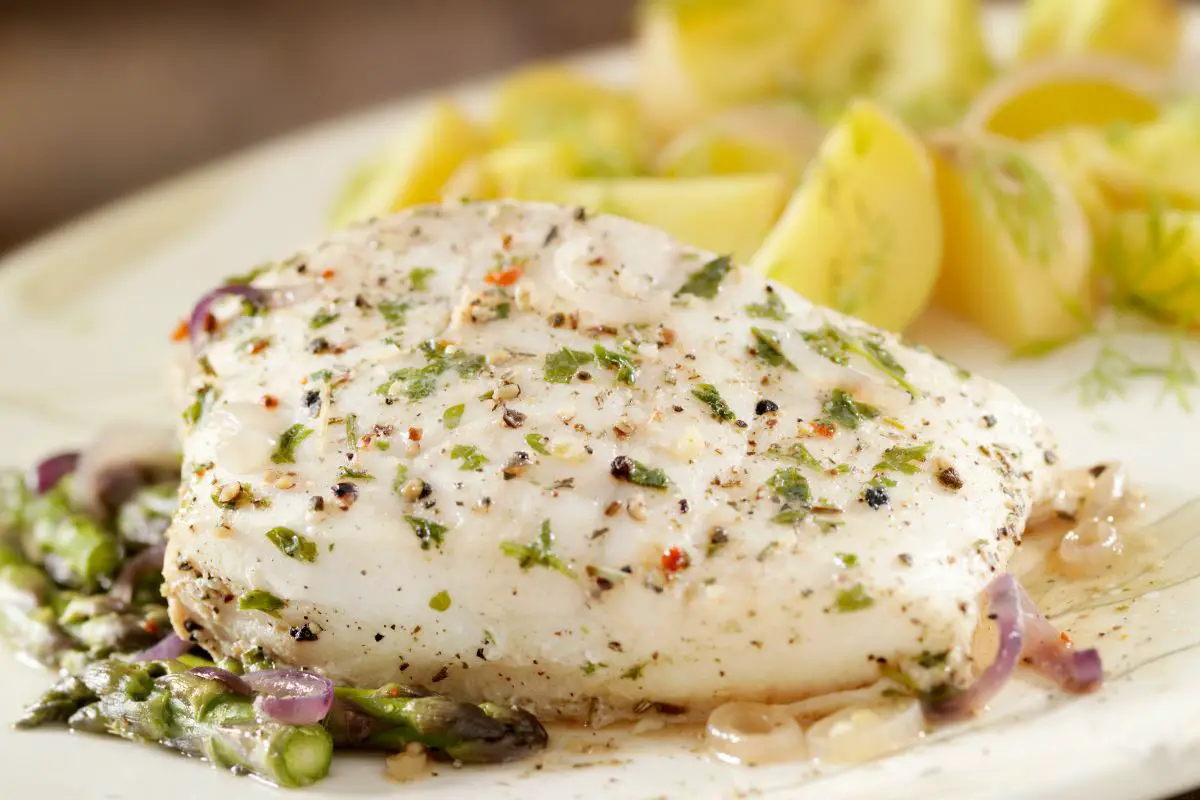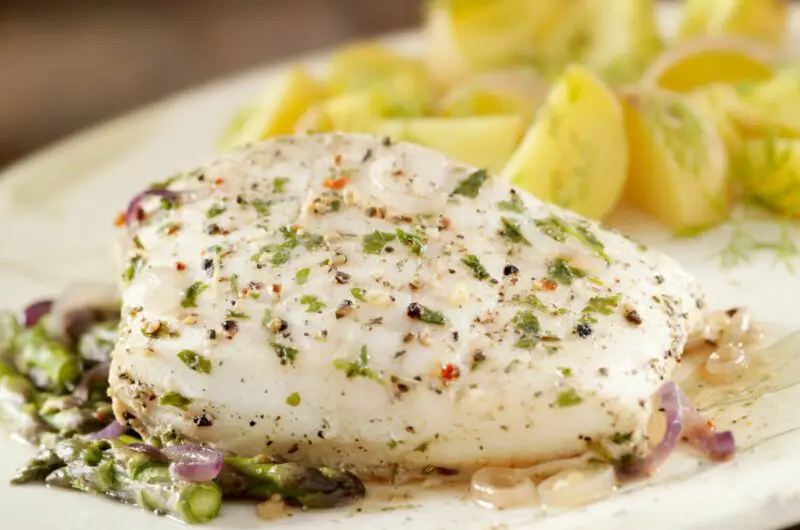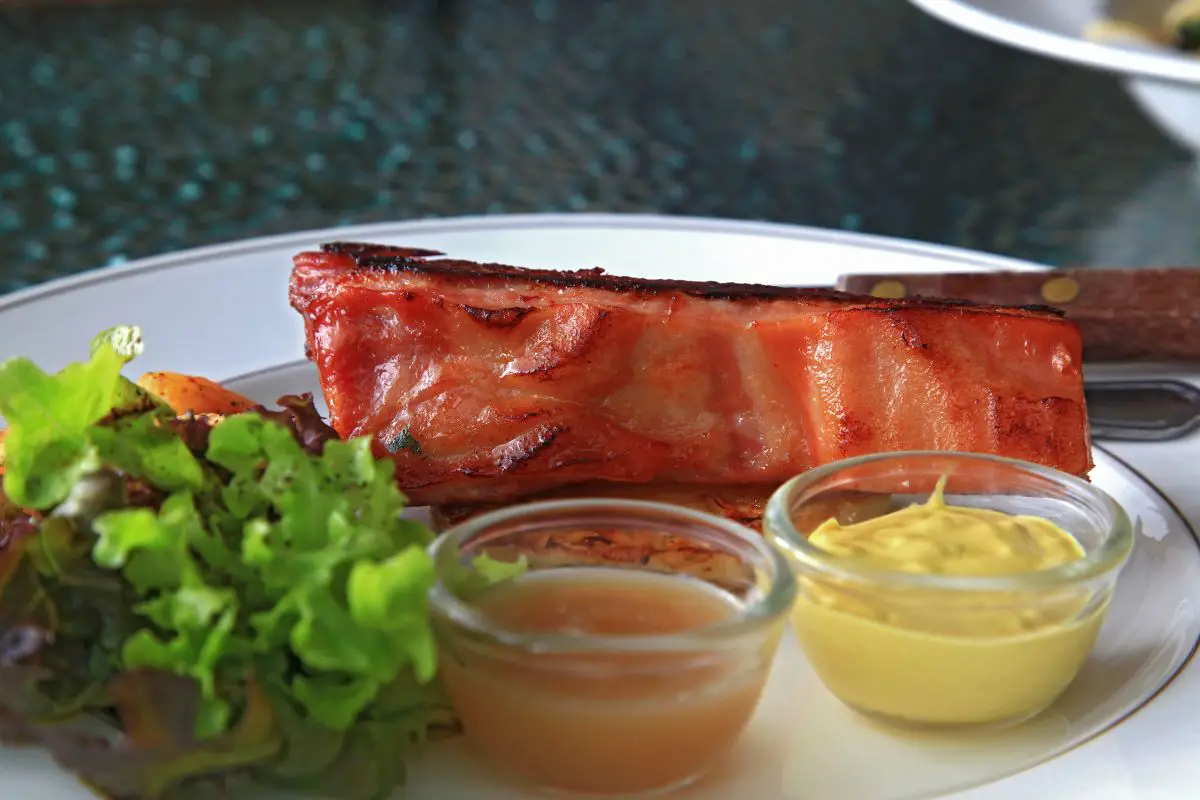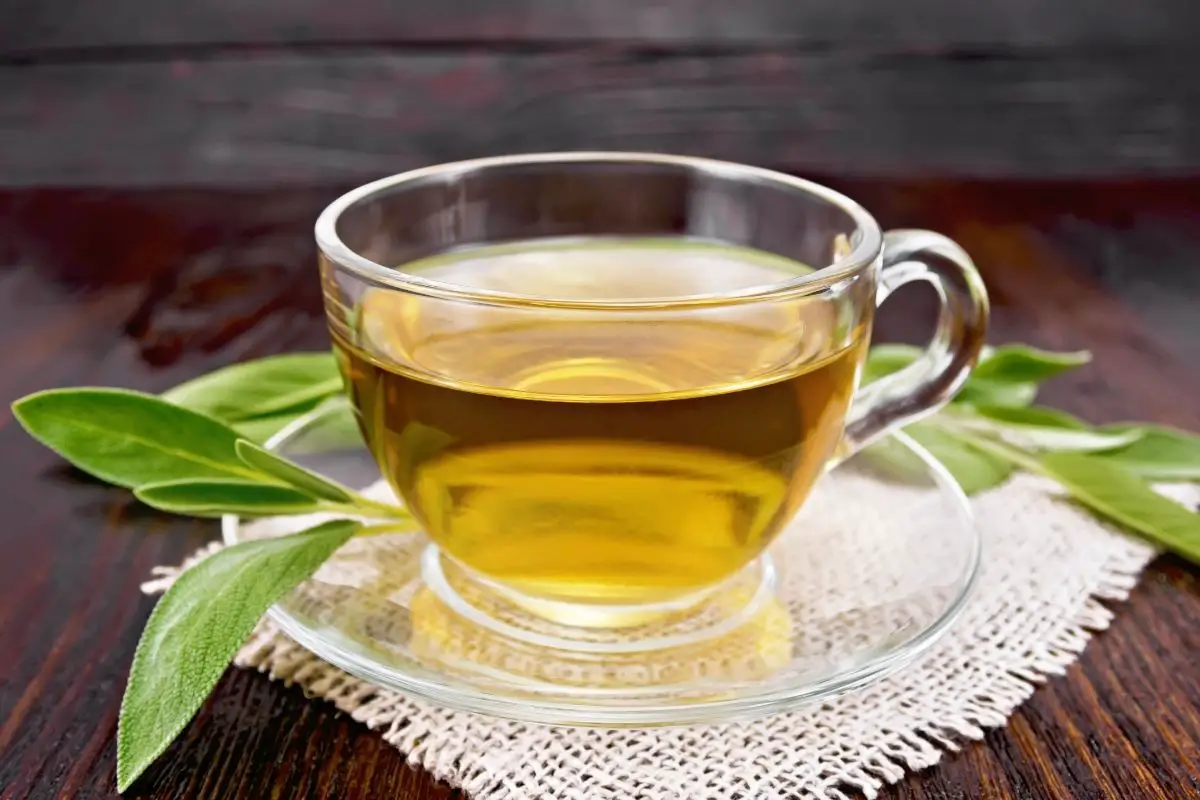If you enjoy eating seafood, then you most likely have come across halibut at some point.
This variety of fish is well-liked throughout the world and can be served in lots of different ways. It might be grilled, broiled, baked, or fried.
Halibut has a mild flavor and white, firm meat. Due to its exquisite flavor and texture, it is frequently regarded as a luxurious fish.
However, if you can’t obtain halibut or want something less expensive, there are a number of great alternatives to try.
In this article, we have gathered the 9 most delicious halibut substitutions you should keep in mind.

What Is Halibut?
Halibut has a very gentle flavor, with a slight sweetness. Thus, you need to be careful to not over season this type of fish.
It becomes flaky when cooked, but you must use moist heat while baking halibut to prevent it from drying out.
Halibut goes nicely with flavors that are light and fresh, like herbs, lemon, and vegetables. Although, it can be prepared using heavier flavors such as cream sauce or bacon.
9 Substitutes For Halibut
The following are great alternatives that you should keep in mind when a recipe calls for halibut, and you can’t get your hands on any.
1. Striped Bass
Since it is so adaptable, striped bass, often known as striper, is among the most sought-after fish. It has a velvety texture and just the right amount of meatiness when cooked.
With no overt fishiness, this fish has a slightly sweet and briny flavor. It is a superb grilling substitute for halibut since the meat is white, solid, and flaky.
You can pan-sear the filets or bake the entire striped bass in a salt crust. Simply add some lemon juice and herbs to the filets, and serve them to create a truly delicious meal.
Striped bass is a terrific choice for broiling, grilling, and baking but is not advised for deep-frying, poaching, or steaming.
2. Flounder
The flounder fish has a firm texture and a moderate flavor. It can be prepared in a variety of ways and is frequently used in place of halibut.
It’s critical to keep in mind that halibut and flounder have different textures. Whereas flounder tends to be a fragile fish with lighter flesh, halibut is a tougher fish with denser flesh. Thus, flounder usually takes less time to cook than halibut.
The flounder ought to be juicy and easy to flake when cooked correctly. The mild and somewhat sweet flavor of flounder makes it a flexible fish that may be matched with different cuisines.
3. Cod
In the cooler waters of the Atlantic and Pacific oceans, a particular species of fish called cod can be found. Cod has white, firm meat that has a mild flavor.
Cod filets can be juicy and flaky when cooked. Hence, this type of fish goes nicely with other fish, vegetables, and herbs when grilled, baked, or fried.
It’s critical to remember that cod has a more delicate flavor and is not as fatty as halibut. Therefore, cod might not tolerate intense flavors or prolonged cooking times as well.
Cod should be cooked until just done and served with light sauces or herbs for optimal results.
4. Dogfish
Small and black in color, dogfish have a strong, meaty texture. Some have compared its mild flavor to that of lobster or crab meat.
The dogfish’s flesh becomes white and flaky when it is cooked. It is possible to peel the skin before cooking, or leave it on to crisp it up to eat.
The Northeast region of the United States, notably along the coast of New England, is where dogfish is most frequently encountered.
In most recipes, it can be used instead of halibut. Just prepare the dogfish as directed for halibut in the recipe to achieve this.
Remember that dogfish cooks more rapidly than halibut because it is a smaller fish, hence cooking times will be reduced.
5. Haddock
Cod’s nearest relative, haddock, is a saltwater fish. Its texture is a little firmer than cod’s, and its flavor is mild and delicate. The flesh is normally white, and this fish contains a fair amount of fat.
Cooking techniques for haddock include poaching, baking, and sautéing. It is frequently used for fish and chips as well.
It’s essential that you bear in mind that haddock has a milder flavor when using it in place of halibut. Hence, you may need to add more seasoning to the dish.
6. Turbot
A flatfish called turbot can be found in the Mediterranean and North Atlantic oceans. The fish’s upper side is brown or grayish-brown, while its underside is white.
Turbot has a moderate, slightly sweet flavor and a firm texture. You can bake, broil, or pan-fry the filets. Although, be aware that turbot has a stronger flavor when using it in place of halibut. For this reason, you might wish to season turbot with something stronger than you would with halibut.
Turbot tends to be thinner than halibut. Therefore, it can cook more quickly, thus, be sure to watch it carefully as it bakes.
7. Sole
The meat of a sole fish is delicate and has a gentle, slightly sweet flavor. It’s a flatfish, which will provide you with a deeper and more exquisite flavor when you cook it with the skin on.
Although there are many various kinds of soles available, the Lemon sole and the Dover sole are the most common. Both fish are incredibly adaptable, but baking or pan-frying is the ideal method of preparation. It can also be steamed or cooked alongside some grilled vegetables.
It’s best to avoid over seasoning the sole, since it has a delicate flavor. However, to make a delicious meal, a little lemon juice, salt, pepper, garlic, or sliced jalapeños may be sufficient.
8. Tilapia
If you want a cheaper fish option, tilapia ought to be used in place of halibut. It is slightly tougher than halibut, but has lean meat with a flaky texture.
Halibut and tilapia differ from one other in terms of flavor. The flavor of tilapia is slightly more fishy. We advise you to purchase your tilapia from a reliable supplier. Since wild tilapia eat algae, they typically taste worse than high-quality aquacultured tilapia.
Tilapia is a flexible fish that can be steamed, baked, broiled, or pan-seared. The meat can become too tough if you overcook tilapia, so we don’t advise grilling or deep-frying it.
9. Orange Roughy
Even though it’s not always simple to get, well-prepared orange roughy can easily replace halibut. Due to orange roughy being a type of deep-sea fish, it is a costly option.
While the juicy, big flaky meat holds together even after the fish is cooked, it also has a subtle, delicate flavor. Orange roughy from frozen is also very tasty and cooks up well.
Your orange roughy can be steamed, poached, baked, or broiled. Due to its versatility, it can be eaten with side dishes of vegetables, rice, or pasta. This fish tastes excellent, and a straightforward preparation of herbs and butter will bring out the best flavor.
Conclusion
Halibut is a really popular fish that appears in many recipes. However, if you find yourself short on halibut, then you can easily replace halibut with any of the delicious alternatives we have mentioned above. Why not give cod, dogfish, sole or flounder a go.
We hope this article has been helpful, and you will keep in mind these 9 delicious halibut substitutions.
9 Delicious Halibut Substitutes To Keep In Mind
Course: Substitutes4
servings30
minutes40
minutes300
kcalIngredients
Striped Bass
Flounder
Cod
Dogfish
Haddock
Turbot
Sole
Tilapia
Orange Roughy
Directions
- Decide on what substitute you need
- Pick a substitute from the list above
- Read what you need to substitute with
- Create the recipe and enjoy
Recipe Video
https://www.youtube.com/watch?v=nhpRDF8xFK4Video can’t be loaded because JavaScript is disabled: Best Halibut Recipe (https://www.youtube.com/watch?v=nhpRDF8xFK4)- What Exactly Do Chickpeas Taste Like? Is There A Distinct Flavor? - September 30, 2023
- Top 11 Low Carb Options at Sonic Drive-In for Keto Diet - September 30, 2023
- What Should You Serve Alongside Potato Salad? 8 Incredible Side Dishes - September 30, 2023











